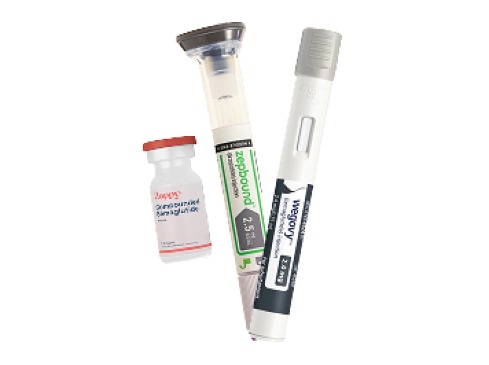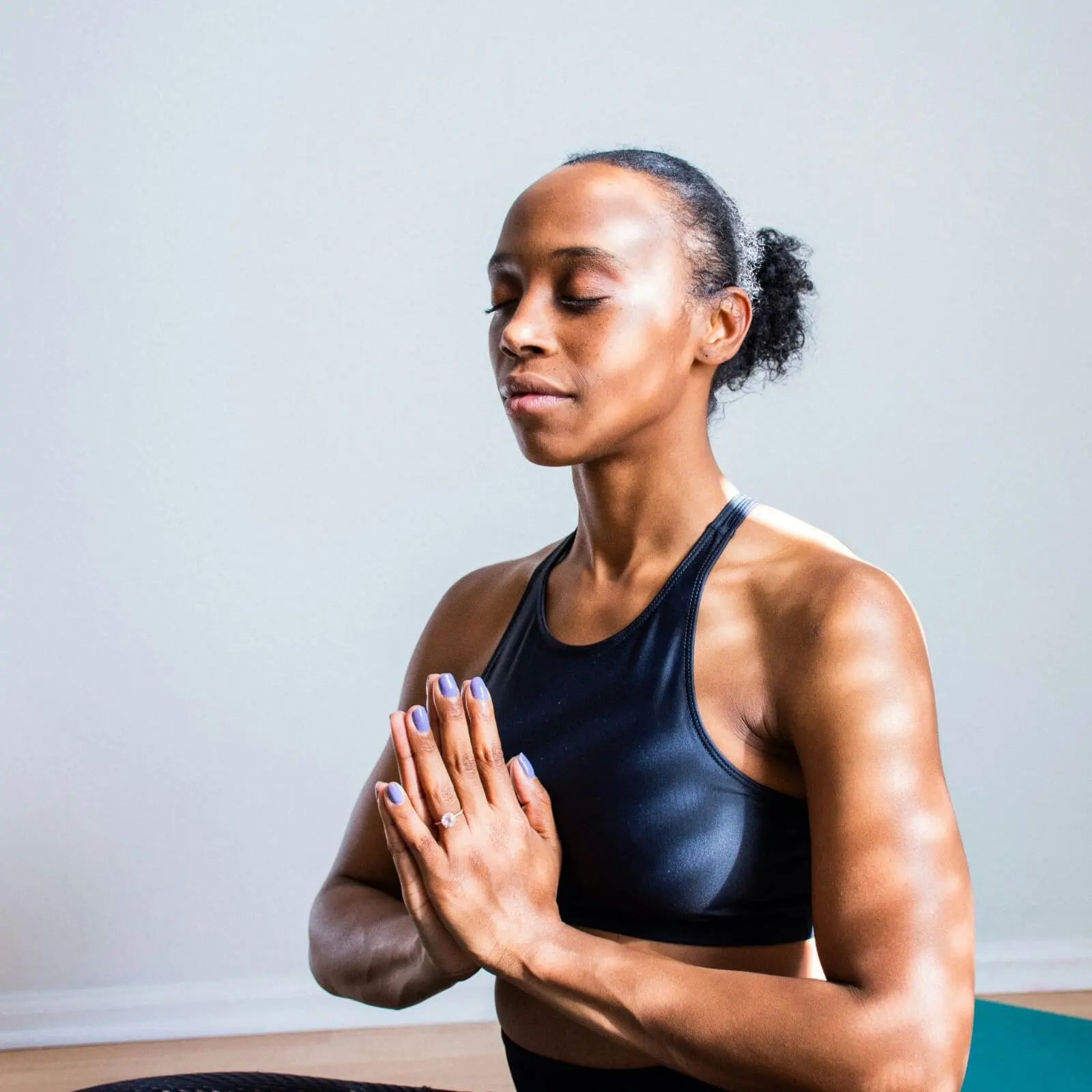The Ultimate Guide to Healthy Aging: Lifestyle Tips & Anti-Aging Treatments

Aging is a natural part of life, but how we age can be shaped by our daily choices. By adopting healthy habits and utilizing modern anti-aging treatments wisely, many people are enjoying longer healthspans – more years of life spent in good health, not just long life. In fact, research shows that adults who practice key healthy habits (like a balanced diet, regular exercise, and not smoking) can live up to 14 years longer than those who don’t. The great news is that it’s never too late to start taking better care of yourself. This comprehensive guide will walk you through proven lifestyle strategies and the latest treatments to help you look and feel your best as the years go by. We’ll cover everything from nutrition and exercise to skincare, supplements, and emerging therapies – all in warm, easy-to-understand language. Let’s dive in!
Nutrition: Eating Your Way to a Longer Life

What you put on your plate is one of the most powerful tools for healthy aging. A nourishing diet gives your body the vitamins, minerals, and fuel it needs to repair cells and fend off age-related diseases. In large studies, people who eat a healthy diet (rich in vegetables, fruits, whole grains, and healthy fats) have a much lower risk of chronic conditions like heart disease, hypertension, and dementia as they age. For example, the Mediterranean, DASH, and MIND diets – all filled with plant foods and lean proteins – are linked to better heart and brain health in older adults. These diets provide plenty of antioxidants, which help combat oxidative stress (cell damage from free radicals) that accumulates with age. On the flip side, diets high in processed foods and sugars can increase inflammation and accelerate aging processes.
Key nutrition tips for healthy aging:
- Emphasize whole foods: Build meals around vegetables, fruits, beans, nuts, whole grains, and fish or lean proteins. These foods supply fiber and nutrients that support healthy cells and organs. Antioxidant-rich produce (think berries, leafy greens) can help neutralize aging-related cell damage.
- Healthy fats: Include sources of omega-3 fatty acids (like salmon, walnuts, flaxseeds) and olive oil. These “good fats” support brain and heart health. Omega-3s, for instance, may help reduce inflammation and have been linked to healthier aging brains.
- Adequate protein: Getting enough protein is important to prevent muscle loss (sarcopenia) as you age. Enjoy protein from varied sources – poultry, fish, eggs, dairy, legumes, and nuts. This helps maintain muscle mass for strength and mobility.
- Stay hydrated: Older adults can be prone to dehydration (which can impact skin and kidney health), so make sure to drink plenty of water throughout the day. Hydration also keeps skin plumper and supports digestion.
- Moderation with alcohol: If you drink, do so in moderation. Low to moderate alcohol (e.g. a glass of wine with dinner) may have some heart benefits for some people, but heavy drinking accelerates aging and increases health risks. Experts define moderation as up to 1 drink per day for women or 2 for men – exceeding that can harm your liver, brain, and more.
Also remember that maintaining a healthy weight through diet (and exercise) is key to longevity. Obesity in midlife is associated with a higher risk of diseases like diabetes and can shorten lifespan. By eating mostly nutrient-dense foods and avoiding excessive empty calories, you’ll be better able to keep your weight in check as you age. And if you need to lose weight, even a modest 5-10% weight loss can significantly improve blood pressure, blood sugar, and other markers of health.
Finally, while a balanced diet should cover most of your nutritional needs, some older adults consider a daily multivitamin or specific supplements (we’ll discuss supplements in detail later). Recent research suggests a multivitamin may improve memory in some older people, but notably, multivitamins have not been shown to prolong life in generally healthy adults. So, focus on food first and use supplements to fill gaps as needed (with a doctor’s guidance).
Physical Activity: Exercise – The Real Fountain of Youth

Staying active is one of the best things you can do to age well. We often hear “use it or lose it,” and that’s absolutely true for muscles, bones, and even the brain. Regular exercise can help you maintain strength, endurance, balance, and mental sharpness into older age. It’s also a powerful preventive medicine: studies show that routine physical activity lowers the risk of many age-related diseases – including heart disease, high blood pressure, type 2 diabetes, osteoporosis, certain cancers, and even cognitive decline. Exercise also improves mood and sleep quality, reduces anxiety, and can add a spring to your step at any age.
How much exercise is enough? The U.S. government guidelines advise adults to get at least 150–300 minutes of moderate-intensity exercise per week (that’s about 30 minutes a day, five days a week). Moderate intensity means activities like brisk walking, cycling, swimming, or even gardening – anything that gets your heart rate up a bit. Additionally, include strength training twice a week (like lifting light weights, using resistance bands, or bodyweight exercises) to keep your muscles and bones strong. If you’re new to strength exercises, start with simple moves (like wall push-ups or chair squats) and gradually increase. Maintaining muscle not only keeps you physically capable but also helps prevent the natural decline in metabolism that comes with age. And don’t forget exercises for balance and flexibility, especially as you get into your 60s and beyond – practices like yoga or tai chi can improve stability and reduce fall risk (a big concern for older adults).
Exercise ideas to incorporate into your week:
- Aerobic activity: Aim for 30 minutes a day of activities like walking, jogging, cycling, swimming, water aerobics, or dancing. Even moderate activities such as brisk walking have great benefits – for instance, brisk walking for 150 minutes a week can improve cardiovascular fitness and has been associated with longer lifespan.
- Strength training: Do muscle-strengthening exercises at least 2 days a week. You can use hand weights or resistance bands at home, or use weight machines at a gym. Focus on major muscle groups (arms, legs, core). Examples: squats or chair stands for leg strength, gentle dumbbell exercises for arms, or Pilates to strengthen the core.
- Balance and flexibility: Especially for seniors, include balance exercises (simple ones like standing on one foot, or more structured classes like tai chi). Yoga is wonderful because it combines balance, flexibility, and strength with mindfulness – and it can be adapted to any level, even chair yoga for those with limited mobility.
- Keep moving throughout the day: In addition to planned workouts, try to sit less and move more in daily life. Take the stairs when you can, do some stretching during TV commercials, or take short strolls during work breaks. Little bits of activity add up and help counteract the effects of too much sitting (which is linked to health risks).
The bottom line: something is better than nothing. If you’re sedentary now, start small – even 5-10 minutes of walking is beneficial. Over time, you can gradually increase duration or intensity as your stamina improves. Many older adults find activities they enjoy (like dancing, playing pickleball, or walking with friends) so that exercise doesn’t feel like a chore. Staying active will not only help you live longer but live better, maintaining mobility and independence. In fact, one Harvard study found that combining a healthy diet with regular exercise was associated with more years lived free of chronic disease compared to people who did neither. So lacing up those sneakers is truly one of the most youth-preserving gifts you can give yourself!
Sleep: Rejuvenation During Rest

Sleep is often the unsung hero of anti-aging. When we sleep, our bodies do critical repair work – think of it as overnight maintenance for your brain and body. Deep sleep triggers the release of growth hormone, which helps repair tissues and build new bone and muscle. Adequate sleep is also essential for memory consolidation (ever notice how a good night’s sleep helps you think clearer?), mood regulation, and a healthy immune system. Chronic lack of sleep, on the other hand, has been linked to accelerated aging processes. For example, people who consistently sleep too little (or too much) tend to have higher rates of chronic diseases and even shorter lifespans. One large study found that getting less than 5 hours of sleep per night was associated with a 40% higher risk of death (all causes) compared to around 7 hours, and consistently sleeping over 9 hours a night was also linked to higher mortality. In short, both insufficient and excessive sleep can be problematic – the sweet spot for most adults is about 7–8 hours of quality sleep per night.
If you struggle with sleep, you’re not alone. Many adults report sleep issues, which can worsen with age due to hormonal changes, medical conditions, or medications. However, improving your sleep can pay huge dividends for your health and daily energy. Better sleep has been associated with sharper cognition, better skin (your skin makes new collagen at night, helping reduce wrinkles), and less risk of depression or weight gain. It also may help reduce levels of chronic inflammation in the body, which is a driver of many age-related illnesses.
Tips for better sleep:
- Stick to a schedule: Go to bed and wake up around the same time each day, even on weekends. A consistent schedule helps regulate your body’s internal clock (circadian rhythm) so you fall asleep more easily at night.
- Create a sleep-friendly environment: Make sure your bedroom is dark, quiet, and cool. Consider blackout curtains or an eye mask if light is an issue, and earplugs or a white noise machine if you need to drown out noise. Keep the temperature on the cooler side (around 65°F is often cited as ideal for sleep).
- Wind down before bed: Establish a relaxing bedtime routine to signal your body it’s time to sleep. This might include gentle stretching, reading a calming book, taking a warm bath, or practicing meditation or deep-breathing exercises. Avoid stimulating activities and bright screens in the hour before bed – the blue light from phones/TVs can suppress melatonin (the sleep hormone) and make it harder to fall asleep.
- Watch late-night eating and drinking: Try not to go to bed either too hungry or too full. A light snack is okay, but heavy meals late at night can cause discomfort or heartburn that disrupts sleep. Also, limit caffeine in the afternoon/evening (since it can stay in your system for 6+ hours) and be cautious with alcohol at night – a nightcap might make you drowsy, but alcohol actually fragments your sleep and reduces sleep quality.
- Stay active (but not right at bedtime): Regular exercise can improve sleep quality and help you fall asleep faster – just finish workouts at least a few hours before bedtime, as exercising immediately before bed might energize you too much. Even a daily walk has been shown to help with insomnia in some people by reducing anxiety and improving sleep patterns.
If you still have trouble sleeping, talk to your doctor. Sometimes issues like sleep apnea (pauses in breathing during sleep), restless legs syndrome, or anxiety need specific evaluation and treatment. Addressing those can dramatically improve your sleep and overall health. Prioritizing sleep is not lazy – it’s smart self-care. Think of good sleep as the nightly reset that allows you to wake up looking and feeling refreshed, with the energy to take on your anti-aging health routine each day.
Stress Management: Finding Calm for Healthy Aging

Modern life can be stressful at times, but chronic stress is like pressing fast-forward on the aging clock. When we’re under constant stress, our bodies release stress hormones (like cortisol) that, over time, can wreak havoc – contributing to higher blood pressure, suppressed immunity, and increased inflammation. You might even feel the effects of long-term stress as looking “older” – ever notice how a particularly stressful year can lead to more gray hairs or fatigue? Science backs this up: studies have linked chronic psychological stress to shorter telomeres, the protective caps on the ends of our chromosomes that shorten as we age. Shorter telomeres are associated with cellular aging and greater risk for conditions like heart disease and cognitive decline. In one notable study, women with high ongoing stress had telomeres significantly shorter than low-stress women of the same age – essentially, high stress had prematurely aged their cells by over a decade.
Managing stress is thus a crucial (if sometimes overlooked) part of an anti-aging lifestyle. Reducing stress not only can make you feel better day to day, but may also slow the wear-and-tear on your organs and even your DNA. Plus, less stress often means better sleep, improved mood, and a stronger willpower to maintain other healthy habits (like exercise and eating well).
Healthy ways to manage stress:
- Mindfulness and relaxation techniques: Practices like meditation, deep breathing exercises, yoga, or tai chi can significantly reduce stress levels. Even a few minutes a day of mindfulness (focusing on your breath, for example) helps calm the nervous system. Over time, meditation can lower your baseline stress and improve mental resilience.
- Stay socially connected: Make time for friends, family, or community activities. Humans are social creatures, and feeling connected to others is a powerful buffer against stress. Studies of adults over 50 have found that loneliness and social isolation are linked to higher risks of disease and earlier death. On the flip side, strong social connections and having a support system can improve mental well-being and help you cope with life’s challenges more effectively. Even volunteering or joining clubs can provide a sense of purpose and reduce stress.
- Hobbies and laughter: Engaging in activities you enjoy (gardening, playing music, crafting, or any pleasurable hobby) can act as a natural stress reliever by taking your mind off worries and into a “flow” state. Laughter too is great medicine – watch a funny movie or spend time with upbeat friends. Laughter releases endorphins that counteract stress hormones.
- Exercise: We mentioned exercise earlier for physical health, but it’s worth repeating here – moving your body is a fantastic way to blow off steam. Aerobic exercise in particular can reduce anxiety and improve your mood by releasing endorphins (those “feel-good” brain chemicals). Even a brisk 20-minute walk when you’re feeling stressed can make a difference.
- Adequate downtime: In our busy lives, we sometimes forget to allow ourselves to relax without guilt. Make sure you have some downtime to recharge, whether it’s reading a book, soaking in a warm bath, or listening to music. Chronic busyness can lead to burnout. Scheduling a little “me time” every day, as simple as sitting quietly with a cup of tea, can help maintain balance.
Another important aspect of healthy aging is mental outlook. Cultivating a positive attitude and finding meaning in life can impact aging in surprising ways. Research shows that having a sense of purpose is associated with better health behaviors and even better sleep and lower inflammation. People who view aging in a positive light (seeing it as a time of wisdom and growth rather than decline) actually tend to live longer and healthier lives, according to some studies. Try practices that boost optimism and gratitude – for example, keeping a gratitude journal (writing a few things you’re thankful for each day) can shift your mindset in a positive direction and reduce stress.
If stress ever feels overwhelming, don’t hesitate to seek professional support. Talking to a therapist or counselor can provide you with coping strategies tailored to your situation. Managing stress is not just about peace of mind – it’s an investment in your long-term health and longevity. By finding healthy ways to unwind, you’re not only likely to feel happier, but you may also age healthier, with a lower risk of stress-related aging effects on your body and brain.
Skin Care: Your First Line of Defense Against Aging Skin

When we think about looking youthful, our skin often comes to mind first. Skin is the body’s largest organ and one of the most visible markers of age – it’s where fine lines, wrinkles, and age spots appear over time. While some skin changes with age are natural and inevitable, a good skincare routine can significantly slow down skin aging and even reverse some signs of damage. The earlier you start caring for your skin, the better, but it’s never too late to adopt healthy skin habits. In this section, we’ll cover proven skincare strategies, from daily routines to specific anti-aging ingredients.
1. Sun Protection – The #1 Anti-Aging Must:
Ultraviolet (UV) radiation from the sun is the single biggest external cause of skin aging (a process known as photoaging). UV rays break down collagen and elastin fibers in the skin, leading to wrinkles, sagging, and sun spots. The solution? Daily sunscreen use. Dermatologists cannot emphasize this enough: wearing a broad-spectrum sunscreen (SPF 30 or higher) every day – even when it’s cloudy – protects your skin and allows it to repair. In fact, a landmark 4-year study in Australia proved just how powerful sunscreen is: people who applied sunscreen daily showed 24% less skin aging (measured in wrinkles and skin texture changes) compared to those who used sunscreen only occasionally. And this benefit was seen even in middle-aged participants, showing it’s never too late to start using sunscreen to slow skin aging. For best results, apply a generous amount of broad-spectrum sunscreen every morning to all sun-exposed areas (face, neck, hands, etc.), and reapply if you’re outside for long or sweating/swimming. Also, seek shade and wear protective clothing (hats, sunglasses) when in strong sun. By preventing cumulative UV damage, you’ll not only reduce wrinkles but also lower your risk of skin cancers.
2. Gentle Cleansing & Moisturizing:
How you care for your skin daily makes a difference over years. Use a gentle cleanser to wash your face – avoid harsh soaps that strip natural oils, as over-drying the skin can make lines more noticeable. After cleansing, apply a good moisturizer to hydrate the skin. Well-hydrated skin looks plumper and smoother, whereas dry skin can make fine lines stand out more. Moisturizers essentially “plump up” the top layer of skin with water and seal it in. Many also contain ingredients that support the skin barrier (like ceramides or hyaluronic acid). Especially as we age, skin tends to become drier, so moisturizing daily (morning and night) is key. Even oily skin types benefit from lightweight, non-greasy moisturizers. If you’re tackling wrinkles, you might choose a moisturizer labeled for anti-aging which often contains additional active ingredients (like antioxidants or retinol – more on retinol next). And remember to be gentle – when washing or applying products, use soft, circular motions rather than rough scrubbing, which can irritate skin.
3. Topical Anti-Aging Treatments (Retinoids & Antioxidants):
Beyond the basics of cleanse-moisturize-protect, certain topical ingredients have solid science behind them for reducing signs of aging:
- Retinoids (Vitamin A creams): Retinoids are often considered the gold standard in anti-aging skincare. These are derivatives of vitamin A that boost skin cell turnover and collagen production. The most potent is tretinoin (a prescription retinoid, originally known by the brand Retin-A), which was actually first used for acne but was found to also reduce wrinkles, fade sun spots, and smooth rough skin texture. Over-the-counter retinol (a weaker form of vitamin A) is also available and can improve skin tone and fine lines, though it works more gradually. Retinoids have a mountain of evidence: they increase collagen in the skin which literally helps “fill in” wrinkles from the inside, and they stimulate new blood vessels for improved skin glow. With consistent use, retinoids can soften fine lines and even reduce deeper wrinkles over time. Do keep in mind they are not an overnight fix – it typically takes 3–6 months of regular use to see noticeable improvements, with best results at 6–12 months. Also, retinoids can be irritating initially (causing dryness or peeling), so dermatologists recommend starting slow: apply a pea-sized amount only a few nights a week, and use a moisturizer on top. As your skin adjusts, you can build up to nightly use. And because retinoids make skin more sun-sensitive, always wear sunscreen during the day (which you’re doing anyway!). Many people in their 40s, 50s, and beyond find that a retinoid cream at night becomes their MVP product for smoother, more youthful-looking skin.
- Vitamin C and other antioxidants: Topical vitamin C (usually in the form of serums) is another science-backed, dermatologist-favorite ingredient for anti-aging. Vitamin C is a powerful antioxidant that can brighten the skin, improve fine lines, and even out skin tone by fading dark spots. It works by neutralizing free radicals from UV and pollution, and also helps boost collagen (vitamin C is required for collagen synthesis in the skin). One study showed that using a vitamin C serum daily for 3 months significantly improved wrinkles and overall skin texture on the face and neck. Vitamin C also pairs especially well with sunscreen – it can enhance UV protection when layered under your SPF. Other antioxidant serums (like vitamin E, ferulic acid, green tea extract, niacinamide, etc.) can also be beneficial, but if you’re looking for a starting point, a well-formulated vitamin C (around 10-20% L-ascorbic acid or a stable derivative) is great in the morning under moisturizer and sunscreen.
- Other skin boosters: There are, of course, many products out there. Alpha-hydroxy acids (AHAs) like glycolic or lactic acid (often found in exfoliating toners or lotions) can gently remove dead skin cells, revealing fresher skin and helping with fine lines and pigmentation. They can complement retinoids or be used on alternate nights if you tolerate them. Peptides are another popular ingredient – these are small proteins that might encourage collagen production (some people find peptide serums or creams helpful, though peptides have less robust evidence than retinoids). And newer on the scene are growth factors or stem-cell extracts in some high-end creams – the jury is still out on their efficacy, and they tend to be pricey. Generally, sunscreen and a retinoid are the top two dermatologist-recommended topical anti-agers, often followed by a vitamin C antioxidant in the morning. You don’t need a 10-step routine; consistency with a few proven products is more effective.
4. Lifestyle habits that affect the skin:
Skincare isn’t only what you apply on the skin – it’s also about your overall lifestyle. Two big ones to note: smoking and sleep. Smoking is extremely damaging to the skin (and the rest of the body). The term “smoker’s face” refers to the characteristic premature wrinkles and sallow complexion long-term smokers get. Cigarette smoke generates a flood of free radicals that break down collagen and elastin, leading to sagging and deep wrinkles (often most pronounced around the mouth – “smoker’s lines”). Smoking also constricts blood vessels, impairing skin circulation and leaving skin dull. If you smoke, know that quitting can slow this damage; people who quit smoking often see improved skin color within weeks and slower wrinkle formation thereafter. As for sleep, we’ve talked about its general health importance – for skin, beauty sleep is a real thing! During deep sleep, skin’s repair mechanisms kick in. Poor sleep over time can show up as dark under-eye circles, increased lines, and reduced skin elasticity (due to elevated cortisol and inflammation). So, protect your skin from the inside by not smoking, managing stress, eating antioxidant-rich foods, and getting enough rest.
5. Professional skincare and treatments:
Regular at-home care makes the biggest difference day-to-day, but you might also consider professional help for specific concerns. Dermatologists or licensed skincare professionals can tailor treatments to your skin’s needs. Options include chemical peels (to exfoliate and stimulate new skin), microdermabrasion (buffing away the top layer of skin), and laser or light therapies. For example, laser resurfacing can significantly reduce wrinkles and blotches by vaporizing old skin so new collagen-rich skin forms. There are also non-ablative lasers and IPL (intense pulsed light) that help with pigmentation and boosting collagen with minimal downtime. Newer technologies like radiofrequency microneedling combine tiny needles and heat to stimulate collagen in deeper skin layers – used for wrinkles and skin tightening. These procedures can be more costly but often produce noticeable improvements, especially when at-home care isn’t giving the desired result. Consulting with a dermatologist is wise before diving into advanced treatments; they can assess your skin and recommend what’s safe and effective for you. They may also prescribe stronger topicals (like prescription retinoids or hydroquinone for dark spots) as needed.
In summary, nurture your skin daily with gentle care, sun protection, and proven actives. Over the weeks and years, these habits truly pay off – resulting in skin that not only looks younger but is healthier. And healthy skin performs its job (protecting you from external harm) better. So slather on that SPF, embrace the retinoid “glow-up,” and enjoy the confidence that comes with taking care of your skin. Your future self will thank you for it!
Injectables and Cosmetic Procedures: Modern Tools to Combat Aging
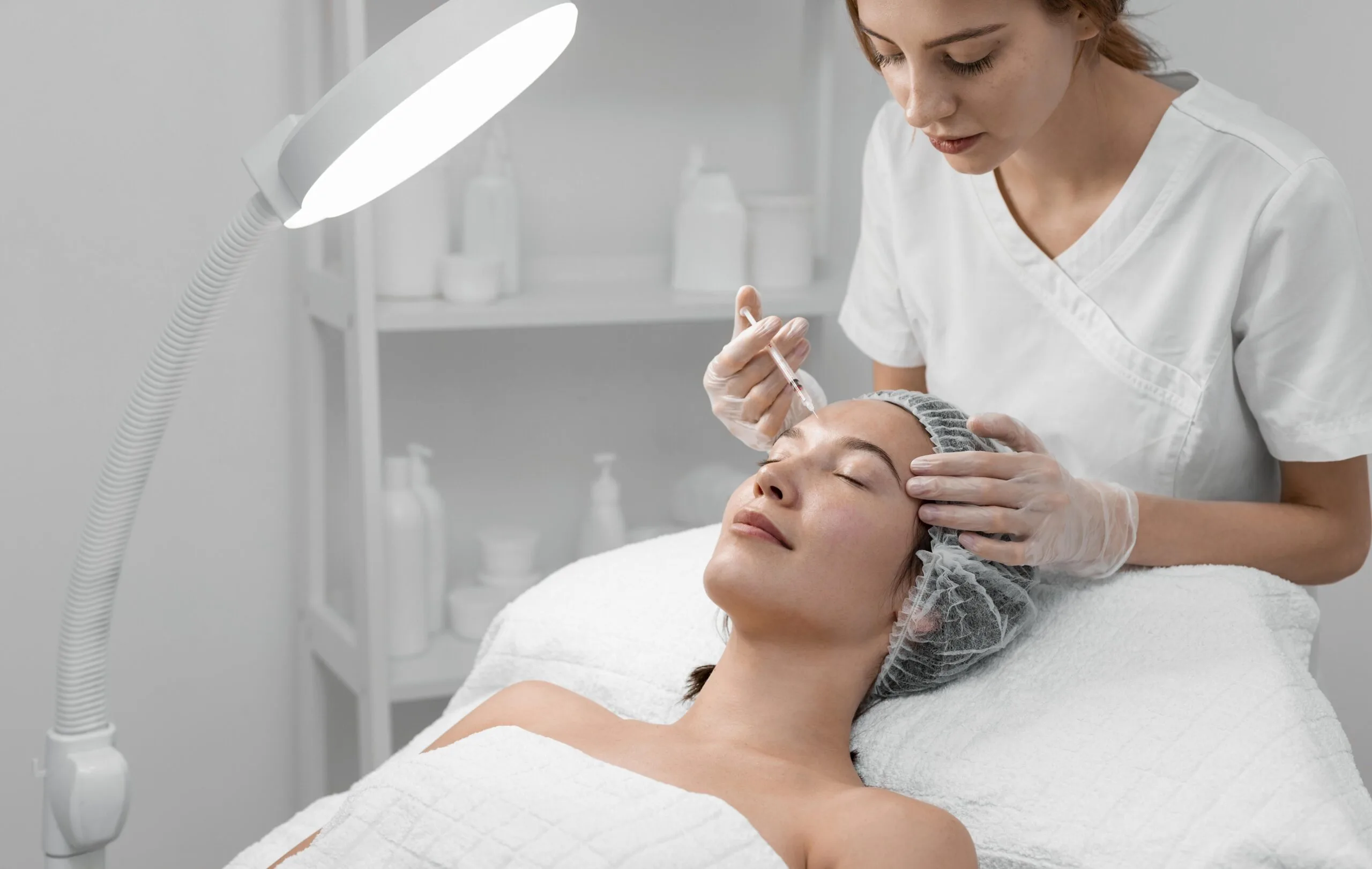
While lifestyle and skincare create a foundation for aging gracefully, some signs of aging – like deep wrinkles or volume loss – may call for an extra boost. In recent decades, cosmetic injectables have revolutionized what’s possible without surgery. Treatments like Botox and dermal fillers can smooth wrinkles, restore facial fullness, and rejuvenate one’s appearance with quick procedures and little downtime. If you’re curious about these options, here’s a friendly overview of how they work and what to expect.
Botox (Neuromodulators for Wrinkles):
Botox is actually a brand name (others include Dysport, Xeomin, and Jeuveau) for a purified form of botulinum toxin. Now, that might sound scary, but in controlled doses it’s very safe and has been used for decades. How it works: Botox injections temporarily relax overactive facial muscles that cause wrinkles. Many facial wrinkles – like frown lines between your brows, forehead creases, or crow’s feet at the eyes – form from repeated muscle movements (squinting, frowning, etc.) over years. Botox is injected in tiny amounts into those specific muscles, causing them to relax. This makes the overlying skin look smoother and prevents deepening of lines. The procedure is quick (often 10 minutes) and relatively painless (a fine needle and feels like a pinch). Effects are not immediate; you’ll notice wrinkles softening over about 5–7 days as the muscle gradually relaxes. At full effect (around 2 weeks), skin creases are much less visible. Properly done, Botox gives you a natural relaxed look – you’ll still have facial expressions, just with less intense wrinkling.
How long does it last? Botox results last around 3–4 months on average. After that, the muscles slowly regain movement and wrinkles may reappear, so repeat treatments are needed to maintain the smoother look. Some people find that with regular treatment, muscles become conditioned and subsequent treatments can last a bit longer.
Safety: When performed by a qualified professional, Botox is very safe. Side effects are usually minor: slight bruising or swelling at injection sites or a temporary headache. A rare side effect is a droopy eyelid or asymmetry if the injection diffuses improperly – this is usually temporary (wears off as the Botox does) and can be minimized by an experienced injector. It’s crucial to go to a licensed and trained injector (dermatologist, plastic surgeon, or experienced nurse injector) to ensure proper technique and dosing. Fun fact: Beyond cosmetics, Botox is used for medical issues from migraines to excessive sweating – it’s quite a versatile medication!
Dermal Fillers (For Restoring Volume and Fullness):
As we age, we don’t just get wrinkles – we also lose volume in areas like the cheeks, lips, and around the mouth. This happens due to fat loss under the skin, as well as bone resorption (yes, even facial bones shrink a bit over time) and collagen loss. The result can be a more sunken or saggy look, with hollows under the eyes, flattened cheeks, thinner lips, or deeper creases (like nasolabial folds from the nose to mouth corners). Dermal fillers address this by literally filling in or plumping up these areas to restore youthful contours. Fillers are gels injected under the skin where volume is needed. The most common fillers are made of hyaluronic acid (HA), a substance naturally found in our skin that binds water and gives skin its plumpness. Popular HA filler brands include Juvederm, Restylane, and others.
What fillers can do: Fillers are very versatile. They can smooth out deep folds (for example, soften those parentheses lines around your mouth or marionette lines below the mouth). They can restore cheek volume, giving a gentle lift to the midface. They are often used to fill under-eye hollows (tear troughs) that can make one look tired. Fillers can also plump thinning lips or refine lip shape, and even fill in acne scars. The goal is usually a natural refresh – you’ll look like you, just less tired or sunken. A skilled injector will add volume in a subtle way that harmonizes with your features.
How long do they last? Hyaluronic acid fillers are temporary; most last anywhere from 6 months up to 18 months, depending on the type and where it’s placed. Areas with more movement (like lips) tend to break down filler faster (closer to 6-9 months), whereas less mobile areas (like under-eyes or cheeks) may last a year or more. Over time the body naturally absorbs the HA gel. Maintenance injections are needed to keep the effect, but one advantage is that HA fillers are adjustable and reversible – if for some reason you didn’t like the result, an enzyme called hyaluronidase can dissolve HA filler.
Safety: Common side effects after filler include temporary redness, swelling, or bruising at injection sites. These usually resolve in days. More serious (but rare) risks include injection into a blood vessel, which can cause tissue damage – again highlighting the importance of an experienced injector, especially for areas like under eyes or nose. Choosing a board-certified dermatologist or plastic surgeon (or a trained provider under their supervision) reduces these risks. HA fillers, being made of a natural substance, are generally well-tolerated. And because hyaluronic acid is naturally present in skin, HA fillers tend to look and feel very natural when placed correctly. Many people love that fillers give an instant result – you walk out of the office with those lines filled or cheeks lifted, no waiting (though there can be a bit of swelling initially).
Other cosmetic treatments:
Botox and fillers are by far the most popular non-surgical treatments for facial rejuvenation. But there are others worth mentioning briefly:
- Chemical peels and laser resurfacing: These are procedures (often done by dermatologists) that improve skin texture, tone, and fine lines by removing outer layers of skin and stimulating collagen. Lighter peels have minimal downtime; deeper ones and ablative lasers can have a week or two of recovery but yield more dramatic results.
- Microneedling: A procedure using fine needles (often with radiofrequency energy added) to create tiny punctures in the skin, triggering a wound-healing response that boosts collagen. It’s used for wrinkles, scars, and improving skin firmness.
- Thread lifts: This is a minimally invasive procedure where temporary sutures (threads) are inserted under the skin to lift sagging areas (like jowls). Results are subtler than a surgical facelift and last maybe 1-2 years. It’s an option for those not ready for surgery.
- Body treatments: Anti-aging isn’t just about the face. Procedures like laser therapy, radiofrequency, or ultrasound (e.g., Ultherapy) can tighten skin on areas like the neck, and body contouring treatments can address age-related fat changes.
Keep in mind, cosmetic procedures are very individual. What one person needs or wants may differ greatly from another. A consultation with a cosmetic dermatologist or plastic surgeon can help identify the most appropriate treatments for your concerns and budget. And remember: non-invasive treatments have limits – they can produce impressive improvements, but they won’t duplicate a surgical facelift or eyelid lift. The upside is they’re much lower risk than surgery and require little recovery time.
Lastly, there’s no shame in seeking a little cosmetic help. These treatments have become common and can be done very tastefully. The goal is often to look refreshed and confident, not to chase an impossible ideal of looking 20 at age 60. When combined with healthy lifestyle habits, cosmetic procedures can boost not just your appearance but also your self-esteem, which is an important part of overall well-being.
Hormone Replacement Therapy: Balancing Hormones as We Age

As we age, our body’s hormone levels shift. In women, menopause (usually around age 50) causes a sharp drop in estrogen and progesterone, while in men, testosterone levels gradually decline (sometimes called andropause or late-onset hypogonadism). These hormonal changes are a natural part of aging, but they can bring unwelcome symptoms and health effects – from hot flashes and mood changes in women to decreased muscle mass and energy in men. Hormone Replacement Therapy (HRT) refers to medical treatments that replenish or balance hormones, typically estrogen/progestin for women and testosterone for men. The goal of HRT is often to relieve troublesome symptoms and potentially improve certain aspects of health that hormones influence (like bone density or body composition). However, HRT is a complex topic with benefits and risks that must be weighed on an individual basis. Let’s break it down in a friendly way:
For Women (Menopausal Hormone Therapy):
When women reach menopause, usually in their late 40s or early 50s, the ovaries dramatically reduce hormone production. The loss of estrogen can cause symptoms like hot flashes, night sweats, vaginal dryness, sleep disturbances, and mood swings. It also accelerates bone loss (increasing osteoporosis risk) and may contribute to skin aging and other changes. HRT for women typically means giving low doses of estrogen (plus progesterone if she still has a uterus, to protect against uterine cancer). This is often via pills, patches, or gels.
Benefits: For a woman in her 50s who is a good candidate, HRT is the most effective treatment for menopausal symptoms like hot flashes and night sweats – often eliminating them or greatly reducing frequency/intensity. It can also improve sleep, mood, and vaginal dryness related to menopause. Importantly, estrogen therapy helps prevent bone loss and fractures; women on HRT typically maintain stronger bones, which is why it’s often recommended if someone has early menopause or other risk factors for osteoporosis. There’s even evidence HRT may help maintain muscle mass and strength that normally decline after menopause. Some women on HRT report better skin hydration and elasticity (estrogen has receptors in the skin, so it likely plays a role in skin thickness and collagen). There’s ongoing research about whether starting HRT around menopause has any effects on heart health or memory – those areas are still debated, but what’s clear is quality of life often improves with symptom relief.
Risks: HRT does carry some risks, which is why it’s not a blanket recommendation for everyone. Past large studies (like the Women’s Health Initiative) raised concerns about increased risks of breast cancer, blood clots, stroke, and heart disease in certain populations on long-term HRT. However, more recent analyses have nuanced those findings. The consensus now is that for healthy women under 60 or within 10 years of menopause, the benefits of HRT generally outweigh the risks. The absolute risk of serious complications in this group is low. For example, combined estrogen-progestin therapy can slightly increase breast cancer risk if used for more than 5 years (roughly 1 extra case per 1,000 women per year of use). There’s also a small increased risk of blood clots and stroke, particularly with oral estrogen. Because of these risks, doctors aim to use the lowest effective dose for the shortest necessary duration. Many women use HRT for 5 years or so around menopause to get through the worst symptoms, then taper off. Some continue longer for bone health or symptom control, but that’s decided case by case. Safety note: Women with a history of breast cancer, untreated high blood pressure, blood clotting disorders, or certain other conditions may be advised against HRT. There are also non-hormonal alternatives for symptom relief in those cases.
Current perspective: Medical guidelines have shifted to a more balanced view: HRT is appropriate and safe for many women in their 50s who need it, but it should be personalized. The NHS and many experts note that for women under 60 without contraindications, the benefits usually outweigh the risks. It’s a far cry from the old notion that HRT was too dangerous across the board. That said, regular follow-ups are important. If you’re on HRT, you’ll typically have annual check-ins to reassess the dose and need, and you should keep up with routine screenings (mammograms, etc.). HRT can be a game-changer for quality of life – e.g., helping a 52-year-old finally sleep through the night without intense hot flashes – but it’s a decision made jointly with your healthcare provider, considering your specific health profile.
For Men (Testosterone Therapy):
Men experience a more gradual decline in testosterone (about 1% per year after age 30 or 40). Some men develop symptoms of low testosterone (“low T”) later in life – fatigue, reduced libido, erectile difficulties, loss of muscle, increased body fat, or depressed mood. Testosterone Replacement Therapy (TRT) can be given via gels, injections, or patches to raise testosterone back to youthful levels. However, TRT in aging men is controversial when it’s not clearly due to a medical hypogonadism condition.
Benefits: In men who truly have clinically low testosterone (hypogonadism) confirmed by blood tests and symptoms, TRT can improve sexual function (libido and erections), boost mood and energy, increase muscle mass and bone density, and reduce fat mass. For example, studies on older men with low T showed improvements in bone density and anemia, and modest improvements in sexual function with testosterone treatment. If a man is diagnosed with testosterone deficiency (due to pituitary or testicular disorders, etc.), replacing to normal levels is generally beneficial for health.
Uncertainties for “anti-aging” use: The tricky part is that testosterone naturally declines with age, and it’s not fully clear if giving testosterone to an otherwise healthy older man (with levels at the low end of normal for his age) yields overall benefits. Some men report feeling more vigorous and youthful on TRT, but clinical trials have shown mixed results. One trial found improved sexual desire and activity, but little change in vitality or physical function in healthy older men. There’s little evidence that testosterone therapy can somehow “reverse aging” in the absence of true hypogonadism. Leading medical organizations do not recommend testosterone for all older men with age-related low testosterone – they reserve it for those with symptoms and confirmed low levels after thorough evaluation. In other words, it’s not a youth elixir for normal aging men, and it’s important to address other possible causes of symptoms (many things can cause fatigue or low mood besides low T).
Risks: Testosterone therapy can have side effects. It may cause acne or oily skin, stimulate prostate tissue (it can worsen untreated prostate cancer or BPH), and reduce fertility (because external testosterone can suppress the body’s own sperm production). It can also increase red blood cell count, which in excess can raise clot risk. There has been debate about cardiovascular risks: some studies raised concern that TRT might increase heart attack or stroke risk in older men, though evidence is mixed and research is ongoing. Because of these risks, testosterone is only prescribed after careful testing and usually with monitoring (e.g., periodic blood counts, prostate checks).
In summary, hormone therapies can improve quality of life for many aging individuals – but they’re highly individualized treatments. If you’re a woman struggling with menopause symptoms or a man suspecting low testosterone, talk with your healthcare provider. They can do appropriate tests (like checking hormone levels) and discuss whether HRT or TRT is right for you. Do not self-medicate with hormones or obtain them without a prescription – it’s crucial to use these under medical supervision. And beware of anti-aging clinics that promise miracle cures with unproven hormone cocktails. For example, some clinics offer growth hormone for anti-aging, but this is not FDA-approved and can be dangerous (linked with joint pain, diabetes, and other side effects). In fact, it’s illegal to distribute growth hormone for anti-aging purposes in the U.S., and reputable experts do not recommend it.
The bottom line on hormones: they can be a piece of the healthy aging puzzle when used appropriately. The goal is to restore balance, not achieve superhuman levels. With professional guidance, HRT can help a 55-year-old woman feel like herself again, or TRT can help a man with true low-T regain vitality. It’s all about the right person, right treatment, right timing. Always consult with a doctor who knows your medical history before starting any hormone therapy, and have regular follow-ups while on it. When used judiciously, hormones can indeed help you age more comfortably and maintain the vitality that makes life enjoyable.
Supplements: Pills and Potions for Longevity – Which Ones Work?
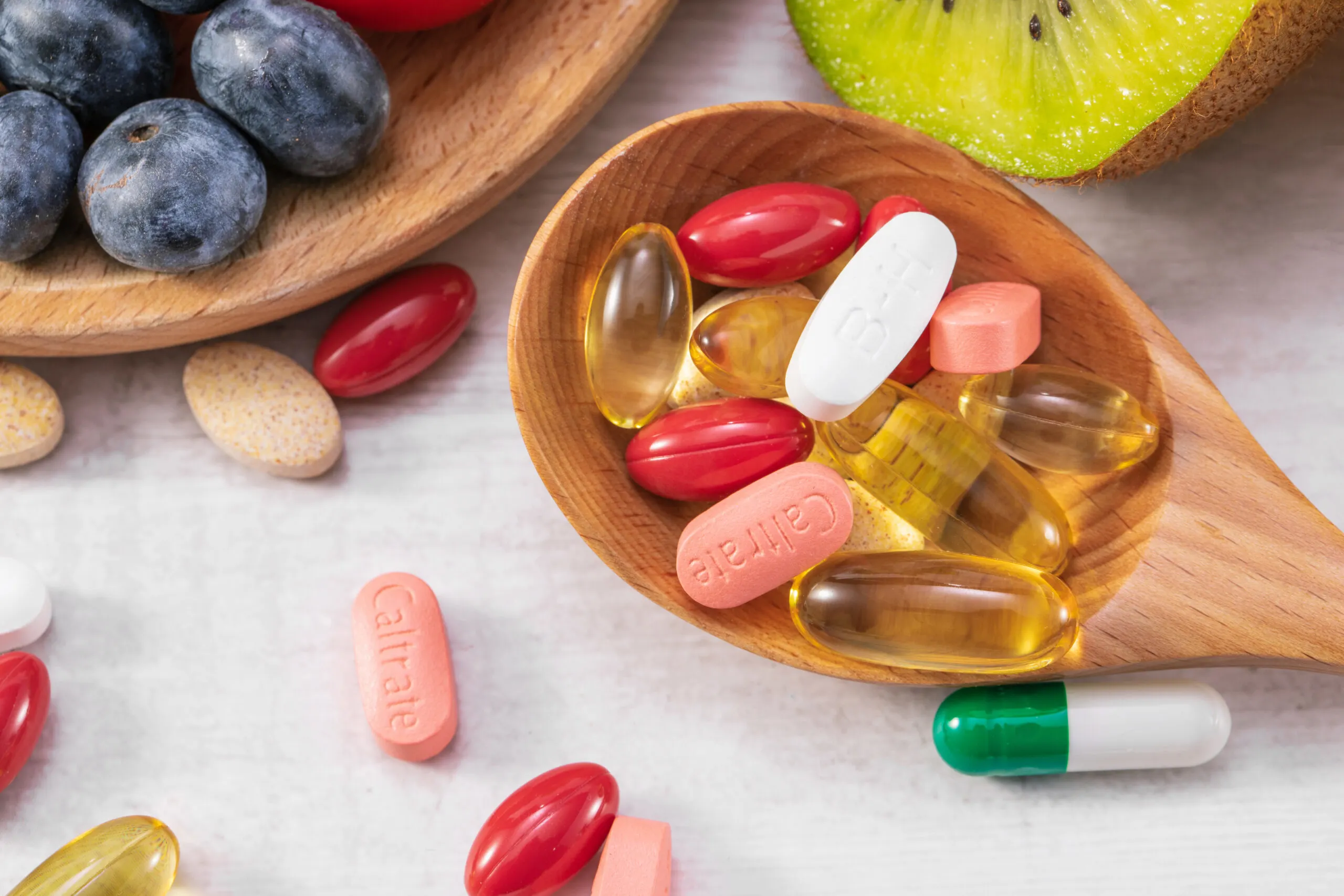
Walk into any health store or vitamin aisle, and you’ll see countless bottles claiming to support anti-aging, longevity, brain health, joint health, and so on. The idea of a fountain of youth in pill form is certainly appealing! But it’s important to approach supplements with a critical eye. While some supplements can be beneficial – especially if you have specific nutrient deficiencies or health conditions – there is no magic “anti-aging pill” proven to extend human lifespan or halt aging. In fact, a very large analysis in 2024 found that people who took multivitamins did not live longer than those who didn’t. That said, supplements can play a supportive role in a healthy aging plan, particularly to ensure you’re getting adequate nutrients. Let’s break down some of the common supplements often discussed in the context of anti-aging and what evidence (if any) backs them:
- Multivitamins: A daily multivitamin is used by many adults as a nutritional safety net. If your diet is generally balanced, you may not need a multi. Large studies have shown no clear longevity benefit to taking a multivitamin in well-nourished populations. However, a recent clinical trial did find that a daily multivitamin was associated with improved cognition (specifically memory) in older adults over a 3-year period. It’s an intriguing finding that suggests multivitamins might help fill subtle micronutrient gaps that affect brain health. In general, a multivitamin is unlikely to be harmful (just avoid mega-dose ones with extremely high levels). It can be a reasonable “insurance policy” especially if your diet is less than ideal. Just don’t expect it to shave years off your age or replace a healthy diet.
- Vitamin D and Calcium: These are crucial for bone health. As we age, and especially for postmenopausal women, vitamin D helps with calcium absorption and bone maintenance. Many adults are low in vitamin D, particularly if they get little sun exposure. Adequate vitamin D may also support immune function and muscle function. It’s often recommended to take a supplement if your levels are low. Calcium is important too, though it’s best obtained from diet (dairy, leafy greens) since high-dose calcium supplements have been linked to kidney stones and aren’t clearly beneficial for the heart. Most guidelines suggest older adults get 1000–1200 mg calcium per day (total diet + supplements) and about 800-1000 IU of vitamin D per day, but your doctor can personalize this. These supplements help prevent osteoporosis, which is a key part of aging well (a hip fracture can really derail one’s independence). They don’t “reverse aging” per se, but they address age-related nutrient needs.
- Omega-3 Fatty Acids (Fish Oil): Omega-3s (EPA and DHA), commonly taken as fish oil capsules, have anti-inflammatory effects and support heart and brain health. Some research suggests omega-3 supplements can lower triglycerides and may slightly reduce risk of cardiac events in certain groups (though results are mixed unless very high doses are used). For brain health, omega-3s are components of cell membranes in the brain and may benefit cognitive aging, but evidence is not conclusive. Eating fatty fish (salmon, sardines) twice a week is strongly associated with heart health and is the preferred route. If you don’t eat fish, a fish oil supplement (or algae-based omega-3 for vegetarians) could be considered. It’s generally safe; main side effect is fishy burps (try enteric-coated or take with meals). So while not an “anti-wrinkle” pill, omega-3 is one of the more evidence-backed supplements for overall healthy aging, particularly cardiovascular support.
- Antioxidant supplements (Vitamin C, E, etc.): Antioxidants scavenge free radicals, theoretically reducing oxidative stress that contributes to aging. However, large clinical trials of antioxidant supplements like vitamins C and E have largely failed to show clear benefits in preventing chronic diseases or extending life. In some cases, high-dose supplements even had unexpected harms (for instance, very high dose beta-carotene increased lung cancer risk in smokers). The current thinking is that antioxidants are best obtained from food, where they come in natural balance with other compounds. Eating a variety of colorful fruits and veggies loads you up with antioxidants like carotenoids, vitamin C, flavonoids, etc., which likely does support healthy aging. But popping a high-dose vitamin E pill probably won’t make you live longer (and could be risky in smokers). One exception might be vitamin C for skin – as mentioned earlier, topical vitamin C can improve skin aging. But as an oral supplement, excess C is just excreted if you’re already sufficient.
- B Vitamins: Folate, B6, and B12 are essential for many body processes. As people age, B12 absorption can decrease (because stomach acid production wanes and acid is needed to absorb B12 from food). Some older adults become deficient in B12, leading to fatigue or nerve issues. So a B12 supplement or B-complex vitamin is advisable if blood tests show low levels or if you follow a vegetarian/vegan diet (B12 is mainly in animal foods). B vitamins also help keep homocysteine levels in check (high homocysteine is linked to heart and brain issues). However, taking excess B vitamins beyond what your body needs won’t give extra benefits – you’ll just pee them out. So supplement to correct deficiencies, but megadosing doesn’t translate to anti-aging magic.
- Coenzyme Q10: CoQ10 is an antioxidant and component in mitochondria (our cells’ energy factories). Levels of CoQ10 in our bodies drop with age. It’s popular as a supplement for heart health and energy. In people taking statin medications (which can lower CoQ10), supplementation can help muscle side effects. There’s some evidence it might support heart function in heart failure patients. As an anti-aging supplement, it’s not proven to extend lifespan, but some individuals feel it improves their energy. It’s relatively safe, though possibly pricey for good-quality versions. Think of it as a “maybe useful for some” supplement rather than a must-have.
- Collagen peptides: Collagen supplement powders have gained popularity for skin, hair, nails, and joints. Collagen is the protein that gives skin its structure. By our 40s, we produce much less collagen, contributing to wrinkles and weaker joints. Ingesting collagen (usually from fish or bovine sources) has some small studies suggesting improvements in skin elasticity and hydration, and possibly reduced joint pain in arthritis. The evidence isn’t robust yet, but since collagen is basically protein, taking (and digesting) it is harmless for most, and some folks do notice benefits in their skin or joint comfort over a few months. If you want to try it, just treat it as a protein supplement and keep expectations moderate.
Herbal and “Anti-Aging” Compounds:
Here is where things get very experimental. Various herbs and plant compounds are touted for longevity:
- Resveratrol: A compound found in red wine and grapes that gained fame when scientists showed it extended lifespan in some lab animals (like obese mice) by activating certain longevity genes (Sirtuins). Resveratrol supplements are widely sold, and while they do mimic some effects of calorie restriction in animals, evidence in humans is limited. Doses used in experiments are often huge (far more than you’d get from a glass of wine). Some small trials show resveratrol may improve insulin sensitivity or inflammation markers, but no solid proof of anti-aging effects in people yet. It’s generally safe in moderate doses, but its bioavailability is low (the body breaks it down fast). It’s an intriguing area of research, but at this point we can’t say resveratrol pills will extend your life.
- NAD+ Boosters (NR/NMN): NAD+ is a molecule in our cells crucial for energy metabolism and DNA repair. NAD+ levels decline with age, and boosting NAD+ has been a hot topic. Supplements like nicotinamide riboside (NR) and nicotinamide mononucleotide (NMN) are forms of vitamin B3 that can raise NAD+ levels. Animal studies show NAD restoration can improve healthspan in mice. Human trials of NR have shown it can increase NAD+ levels in older adults and is well-tolerated. But does it translate to tangible health benefits? So far, evidence is scant. A few small studies are looking at muscle or brain effects, but nothing definitive. Some longevity enthusiasts take NR or NMN as a hopeful measure (you may have heard of some scientists themselves doing this), but it’s still experimental. The FDA recently also raised issues with NMN being marketed as a supplement. So, while NAD+ boosters are promising on a theoretical level, we need more research to know if they actually slow aging in humans.
- Other touted compounds: These include things like curcumin (from turmeric, anti-inflammatory), EGCG (from green tea), fisetin and quercetin (plant flavonoids that in high doses act as “senolytics” in lab studies – more on senolytics soon), and adaptogenic herbs like ashwagandha or ginseng (believed to help the body handle stress). Generally, these may have health benefits (like reducing inflammation or improving stress response), but their direct effect on aging is unclear. If one finds a particular herb helps them feel better or manage a specific issue (e.g., ashwagandha for stress relief), that’s great – just ensure it’s from a reputable source and doesn’t interact with any medications.
The bottom line on supplements: There’s no supplement out there that can replace healthy living or turn back the clock dramatically. Some, like vitamin D or B12, are important to take if you need them. Others might give subtle benefits or fill gaps in your diet. And many are likely a waste of money for an average healthy person. Always be wary of extravagant claims – if a pill “guarantees” you’ll look 20 years younger or live to 120, that’s a red flag. The supplement industry isn’t as tightly regulated as pharmaceuticals, so quality and accuracy of what’s on the label can vary. It’s wise to choose brands that are third-party tested for quality. And importantly, talk to your doctor before starting any supplement, especially if you take medications, since even natural supplements can have side effects or interactions.
Focus on getting nutrients from your diet first – a colorful plate and balanced meals are the original “supplements” that humans have thrived on. Use supplements to supplement (the key is in the name!) where needed, not to over-saturate your system with things it likely doesn’t require. In the future, we might see more targeted “geroprotective” supplements as research evolves – but for now, think of supplements as supporting actors, not the stars of the show, in your anti-aging script.
Emerging Therapies: The Future of Anti-Aging (Stem Cells, Senolytics, and More)
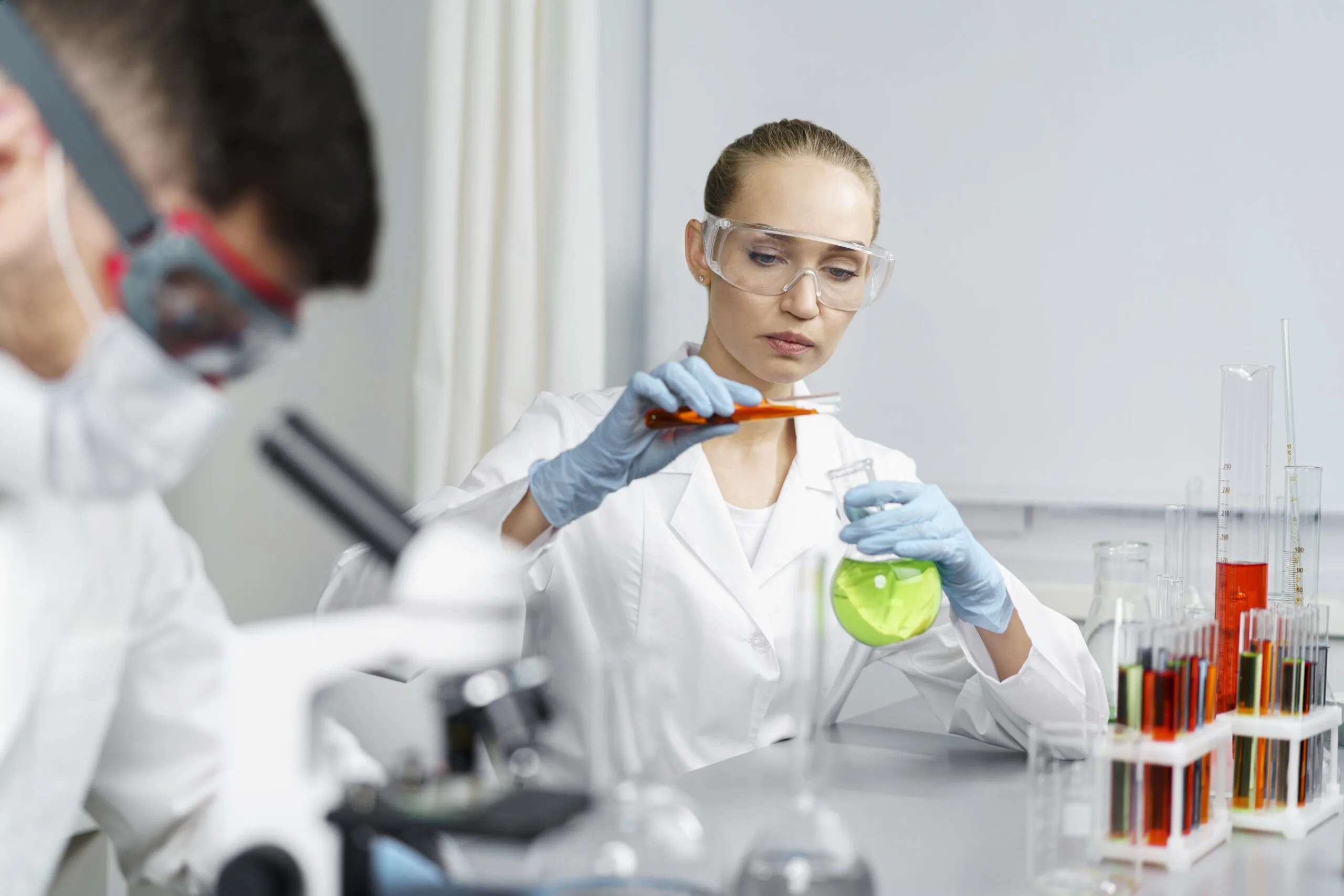
The quest to slow down aging has moved from science fiction to cutting-edge research labs. Beyond the conventional strategies we’ve discussed, scientists are exploring new frontiers aimed at attacking aging at its biological roots. Here we’ll peek into some emerging anti-aging therapies – such as stem cell treatments, senolytic drugs, and genetic approaches. These are mostly in experimental or clinical trial stages as of 2025, so while they sound exciting, remember they are not yet part of standard anti-aging practice. But they offer hope for the future and are worth keeping an eye on.
Stem Cell Therapies:
Stem cells are like the body’s raw materials – they can develop into many different cell types and help repair tissues. As we age, our own stem cells gradually lose their vigor. The idea behind stem cell therapy is to introduce new, robust stem cells to regenerate aged or damaged tissues. For example, researchers are testing infusions of mesenchymal stem cells (MSCs) (commonly derived from bone marrow or umbilical cord tissue) to treat age-related conditions such as frailty. Early clinical trials have shown some promising results: in one Phase II trial, older adults with frailty who received an IV infusion of MSCs (product named Lomecel-B) had improved physical performance and strength compared to placebo. Other trials with patients’ own fat-derived stem cells injected into aging facial skin showed improvements in skin elasticity and thickness. These suggest that stem cells may help rejuvenate tissues to some degree. Moreover, multiple trials are ongoing around the world, targeting everything from osteoarthritis to Alzheimer’s with stem cells.
However, it’s early days and there are important cautions. First, we need to ensure safety and proper delivery. Stem cells given intravenously can sometimes get trapped in organs like the lungs, and there’s a theoretical risk they could spur unwanted tissue growth or tumors. So far, therapies like MSC infusions have shown good safety in trials, but long-term effects need further observation. Also, many so-called “stem cell clinics” have popped up offering unproven treatments – buyer beware! Always seek out clinical trials or treatments under reputable medical centers, as the unregulated clinics may give treatments not properly vetted, and some have caused serious harm. At present (2025), FDA-approved stem cell treatments are limited (mainly involving bone marrow transplants for certain diseases). Using stem cells broadly for anti-aging is not yet mainstream or fully legal outside of trials. Scientists are also investigating ways to stimulate our own stem cells, or using lab-grown cells to replace aging cells in organs. It’s an exciting field that in the coming decade could yield therapies to regenerate heart tissue after heart attacks, rebuild cartilage in arthritic joints, or even refresh the immune system. For now, consider stem cell therapy as a hopeful work-in-progress – watch the research, but approach any commercial offers with skepticism unless backed by strong clinical evidence.
Senolytics – Clearing Out “Zombie Cells”:
One of the hot areas in aging research is the role of cellular senescence. Senescent cells are cells that have essentially retired – they no longer divide, but they don’t die off when they should. Instead, they hang around secreting inflammatory chemicals, kind of polluting the environment for other cells. They’ve been dubbed “zombie cells” because they’re alive but dysfunctional. As we age, senescent cells accumulate in many tissues and are thought to contribute to aging and chronic diseases (like arthritis, atherosclerosis, diabetes complications, etc.). Enter senolytic drugs – a new class of drugs aimed at selectively destroying these senescent cells. By killing off the problem cells, the hope is to delay or alleviate age-related conditions and maybe extend healthy lifespan.
Researchers have identified some senolytic candidates, notably a combination of two drugs: Dasatinib (a cancer drug) and Quercetin (a plant flavonoid). In mice, periodic treatment with these drugs cleared senescent cells and improved tissue function and lifespan in several studies. In the first small human trials – for example, giving dasatinib+quercetin to patients with diabetic kidney disease – results showed reduction in senescent cell markers and some signs of improved tissue function. Another early trial in idiopathic pulmonary fibrosis (a lung disease involving senescent cells) suggested enhanced physical performance after senolytic therapy. These are early but encouraging signs that senolytics might work in people.
Currently, multiple clinical trials are underway testing senolytics in conditions like Alzheimer’s disease, osteoporosis, and osteoarthritis. If successful, we might see FDA-approved senolytic treatments in the coming years targeted at specific diseases of aging. The vision is that maybe one day, older adults could take a senolytic drug intermittently (say, a course of pills every few months) to clear out accumulated senescent cells, thereby delaying aging-related deterioration. It almost sounds like sci-fi – a “cellular housekeeping” pill. But it has a basis in solid science. Of course, we need to ensure these drugs are safe – completely wiping out senescent cells could have risks too, since senescence is also a mechanism to stop potentially cancerous cells from multiplying. The current senolytics aim to target cells expressing particular “survival proteins” that senescents rely on.
So, senolytics are a promising anti-aging strategy on the horizon. For now, they’re experimental – you might hear of supplement versions (like high-dose quercetin or fisetin) marketed as senolytic; while these are natural compounds found in fruits, the precise dosing and efficacy in humans are not established, so approach those with caution. Keep an eye out as research progresses. If senolytics deliver on their promise, it could mean healthier golden years with less chronic disease burden.
Genetic and Epigenetic Approaches:
We’re also learning that aging is influenced by gene activity and gene stability. Gene therapy – directly modifying or adding genes – is being explored for certain rare disorders and could theoretically address aging if specific longevity genes are identified. That’s far off for general use, but one example: some animal studies used gene therapy to increase telomerase (an enzyme that lengthens telomeres) and saw extended lifespan. Epigenetic reprogramming is another cutting-edge concept: basically, using factors (like Yamanaka factors) to reset aged cells to a more youthful state. In lab experiments, partial reprogramming in mice has reversed some signs of aging without completely wiping cell identity. It’s very experimental (and full reprogramming causes cells to lose their function or turn cancerous, which is obviously dangerous), but it hints that turning back the clock on cells might be feasible. Companies are already working on safe ways to do this – imagine a treatment that could rejuvenate old tissues by rebooting the cells to a younger gene expression profile. We’re not there yet, but it’s fascinating science.
Another buzzword is “gene editing” (like CRISPR). There’s speculation that maybe one day we could edit certain genes to slow aging or protect against diseases. Right now, gene editing in adults is being trialed for serious diseases (like editing immune cells to fight cancer, or correcting genetic blood disorders). Using it for aging would require identifying specific genetic targets that reliably influence aging – which we don’t fully have, since aging is complex and polygenic. But as our understanding grows, it’s not out of the realm that, far in the future, gene editing might be part of longevity medicine for those who choose it.
Young Blood and Plasma Therapies:
Here’s one that often makes headlines – the somewhat vampiric idea that “young blood” can reverse aging. This stems from mouse experiments where the circulatory systems of a young and old mouse were connected (parabiosis) – the old mouse showed rejuvenated muscles and brain, and the young mouse showed signs of accelerated aging. It suggested that factors in young blood (or absence of harmful factors in old blood) affect aging. Some startups and trials have looked at giving older individuals infusions of young plasma (the liquid part of blood from young donors). A small trial called Ambrosia (not well-controlled) claimed some positive effects, but it was controversial and the FDA stepped in warning against this practice outside of research. On the flip side, there’s research into removing “old” plasma and replacing it with saline/albumin (basically diluting pro-aging factors). A trial called “VICTORIA” (in Alzheimer’s patients) is testing whether plasma exchange can help by removing toxic proteins. This area is still speculative for humans. It’s a neat concept – that maybe a future therapy could be something like a plasma exchange or infusion that rejuvenates internal environment. But until more data is in, do not believe anyone selling blood transfusions as an anti-aging cure – it’s unproven (and blood transfusions carry their own risks if not medically needed).
Metabolic Drugs (Metformin, Rapamycin):
A couple of existing drugs have drawn interest for their potential longevity benefits:
- Metformin: A common diabetes medication that some studies found diabetic patients on metformin outlived even non-diabetics. It has anti-inflammatory and metabolic effects that might protect against cancer and heart disease. A large trial called TAME (Targeting Aging with Metformin) has been proposed to see if metformin can extend healthy years in non-diabetic older adults by delaying multi-age-related diseases. If that trial shows positive results, metformin could become a cheap anti-aging intervention.
- Rapamycin (and rapalogs): An immunosuppressant drug used in organ transplant patients, rapamycin extends lifespan significantly in mice (one of the most robust results in aging research). It works by inhibiting mTOR, a pathway involved in nutrient sensing and cell growth. In small human studies, low-dose rapamycin or related drugs improved immune response to vaccines in older adults, suggesting it might boost immune function if dosed carefully. However, rapamycin at higher doses can have side effects (e.g., elevating blood sugar, risk of infections due to immune effects). Some biohackers already experiment with taking weekly low doses, but this is not standard medical practice yet. Researchers are trying to develop safer “rapalogs” or dosing regimens that confer the benefits without significant risks. Rapamycin is essentially mimicking a caloric restriction signal (when nutrients are scarce, cells go into maintenance mode which promotes longevity in animals). It’s possible that in the near future, rapamycin-based therapies might be used intermittently to slow aging processes – some researchers even envision giving it to pets (trials in dogs are underway) to extend their healthspan.
Important Caution: While all of this is exciting, none of these emerging therapies are fully validated for general use as anti-aging treatments yet. Always be wary of clinics or products that claim to offer these now – many are experimental or even illicit. For example, some anti-aging clinics sell concoctions of growth hormone, testosterone, and other hormones to “reverse aging,” but as we discussed, growth hormone for anti-aging is not proven and can be risky (and illegal to market for that use). So, stay informed through reputable sources or clinical trial results, and consult medical professionals before considering any unconventional treatment.
The hope is that in the coming decades, aging will become something we can actively manage and treat, much like we manage other health conditions – extending not just our lifespan but our healthspan. The field of geroscience (the science of aging) is booming, and each year brings new discoveries. Who knows – perhaps therapies like gene editing or cell rejuvenation that sound like science fiction now will be commonplace for our children or grandchildren.
For now, the best approach is to combine proven healthy lifestyle measures (as covered in this guide) with a cautious optimism about future breakthroughs. You are effectively banking health now so you’ll be in the best position to take advantage of new advances as they arrive. It’s an incredibly hopeful time in aging research – aging is no longer seen as an untouchable, inevitable decline, but rather a series of processes we can understand and potentially intervene in. By staying proactive about your health and staying informed, you are riding the wave of this new era of longevity science.
Conclusion: Putting It All Together for Your Personalized Anti-Aging Plan
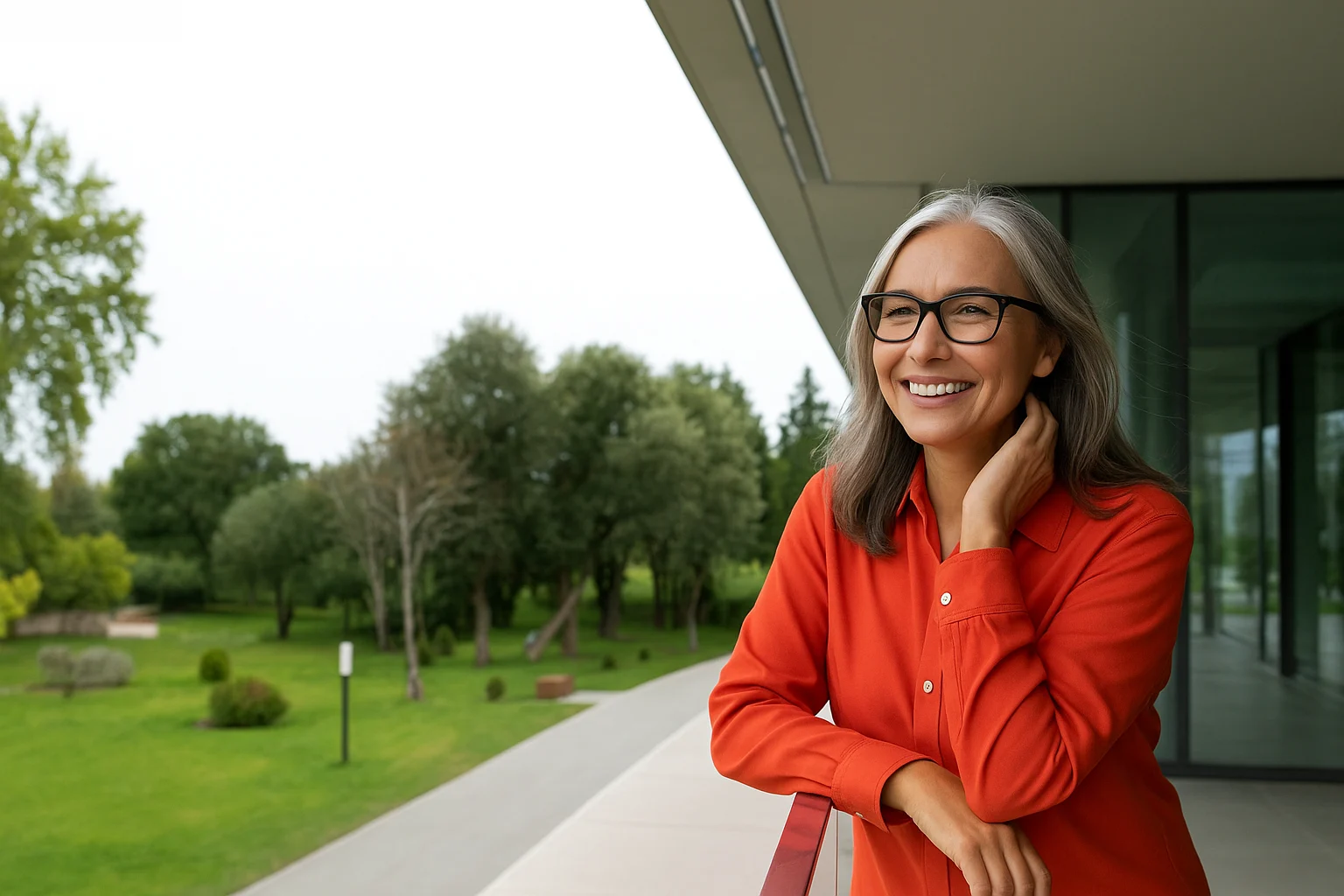
We’ve covered a lot of ground – from eating your greens and exercising, to sunscreen and serums, to the latest science that might one day transform aging itself. The key takeaway is that healthy aging is holistic. There’s no single secret; instead, it’s the combination of many small choices and habits, compounded over time, that makes the biggest difference. You can empower yourself today with the strategies already in our toolkit – nourishing food, regular physical activity, refreshing sleep, stress reduction, and smart skincare. These alone can help you feel vibrant and youthful well into your golden years. On top of that, safe and effective medical therapies (like appropriate use of hormone therapy or cosmetic treatments, when desired) can address specific aging concerns and improve your quality of life.
It’s also clear that one size does not fit all. Genetics, personal medical history, and individual preferences mean that the ideal anti-aging plan will vary from person to person. That’s why it’s wise to consult with healthcare professionals as you navigate your anti-aging journey. Your doctor can check important health markers (cholesterol, blood pressure, bone density, etc.) and help tailor recommendations – whether it’s determining if you’d benefit from vitamin D supplements, or if that new knee pain is just wear-and-tear vs. something needing treatment. A dermatologist can design a skincare regimen suited to your skin type and advise on any cosmetic procedure if you’re interested. And as new therapies emerge, medical experts can guide you on what’s safe and effective versus hype.
Think of your anti-aging game plan as a personalized roadmap. Start with the fundamentals: perhaps you set a goal to walk 5 days a week, add an extra serving of vegetables to your meals, go to bed by 10:30 pm, and apply moisturizer and SPF every morning. These are manageable steps. Once those become routine, you can layer on more (maybe a yoga class twice a week for stress and balance, or finally quitting smoking, or trying that retinol cream). Celebrate the positive changes you feel – more energy, strength, confidence in your skin – because that will motivate you to keep going. Aging well is a marathon, not a sprint, and consistency beats perfection.
Finally, maintain a positive outlook. Attitude matters – studies show that people who view aging positively (staying engaged with life, continuously learning, and adapting to change) actually live longer and healthier. Age really can be just a number. With the right practices, 60 can be the new 50, or 70 the new 60, in terms of your health and vitality. And remember, you don’t have to do it alone. Partner with your healthcare providers and lean on supportive friends or family. There’s also a wealth of credible resources – from senior fitness groups to nutrition workshops – that can provide guidance and camaraderie.
As you apply the knowledge from this guide, listen to your body and be patient. Changes won’t happen overnight, but every healthy choice is an investment in your future self. We encourage you to consult with a qualified healthcare professional to help create a personalized anti-aging plan. They can run any necessary tests (for example, checking hormone levels or nutritional deficiencies) and advise on interventions tailored to you. Medicine is increasingly embracing preventive and longevity-focused care, so don’t hesitate to bring up your goals of healthy aging with your doctor – it’s a great conversation to have.
Here’s to a long, fulfilling life with more years and better years! By taking proactive steps now and staying informed about emerging options, you’re stacking the odds in favor of aging on your terms. May you continue to thrive at every age, and remember that the best time to start caring for your future self is today. If you need guidance or have questions along the way, reach out to healthcare professionals who can provide personalized advice. You deserve a plan as unique as you are. Embrace it, and enjoy the journey of growing older your way.
Next Steps / Call to Action:
Ready to take charge of your aging journey? We recommend making an appointment with your healthcare provider to discuss your health goals and any preventive screenings you might need. Bring up any topics from this guide that interest you – whether it’s evaluating your diet, starting an exercise program, checking hormone levels, or updating your skincare routine. Your provider can help prioritize and coordinate these aspects safely. Additionally, consider seeing specialists as needed (for instance, a nutritionist for diet overhaul or a physical therapist for an exercise plan suited to any limitations). The aim is to build a personalized roadmap that fits your life. Consulting professionals ensures you get expert input and support, which can make all the difference in staying on track and avoiding pitfalls. Aging is a journey we all share – and with the right team and plan, it can be one of growth, health, and happiness. Here’s to your best future! Stay proactive, stay curious, and never hesitate to seek guidance – your health is worth it.

